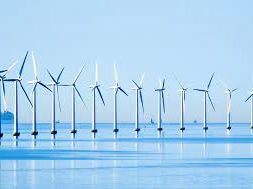
Wind farms drive away certain seabirds: study – EQ Mag
PARIS : Offshore wind farms drive away a species of bird in the North Sea, scientists found in a study published Thursday, warning that energy reforms must not “amplify the biodiversity crisis”.
Researchers based in Germany monitored numbers of red-throated loons — a long-necked duck-like bird also known as a diver — around five offshore wind farm (OWF) sites from 2010 to 2014.
Abundance of loons in their spring resting sites declined by 94 percent within one kilometre (0.6 miles) of a wind farm and 52 percent within 10 kilometres, said their study in the journal Scientific Reports, published by Nature.
The overall number of birds around the sites declined by nearly a third, from nearly 35,000 before the wind farms were built to just under 25,000 afterwards.
Previous studies had indicated “significant impacts” for other birds, the paper noted — some species were attracted to them and risked getting killed by the rotor blades.
But “no other seabird species group has demonstrated such a strong, negative response” to offshore windfarms as the loons, it said.
“We are quite confident that loons react primarily to the existence and visibility of these structures and less to the movements of the rotors,” lead author Stefan Garthe told AFP.
“Loons are also very sensitive towards ship traffic” such as boats servicing the wind farms, he said. “It seems that they avoid all above-surface activities of humans.”
After the wind farms were built, the seabirds flew further afield in search of food.
“These new areas are likely less good feeding sites for the birds, otherwise they would have visited those areas in high numbers before,” Garthe said.
Solar and wind power are expanding as countries seek carbon-free forms of energy to limit the planet-warming effects of fossil fuels.
A survey published by climate and energy think tank Ember showed that electricity generation from wind grew by 17 percent in 2022, to represent 7.6 percent of the world total.
“Although renewable energies will be needed to provide a large share of our energy demands in the future, it is necessary to minimize the costs in terms of less-adaptable species, to avoid amplifying the biodiversity crisis,” the seabird study warned.
















